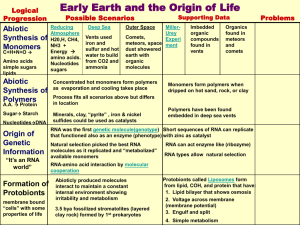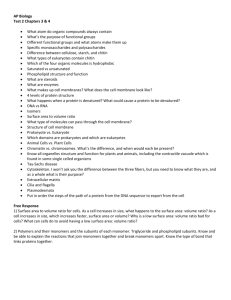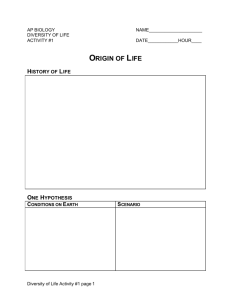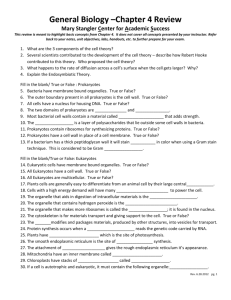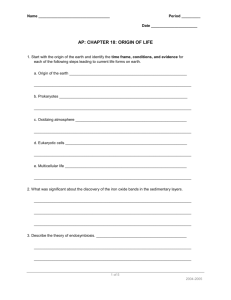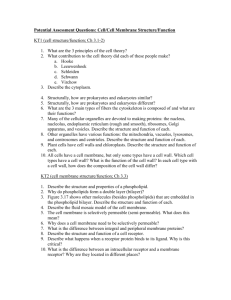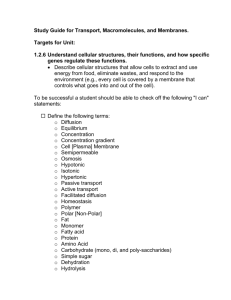Unit 4: Origins & Evolution
advertisement
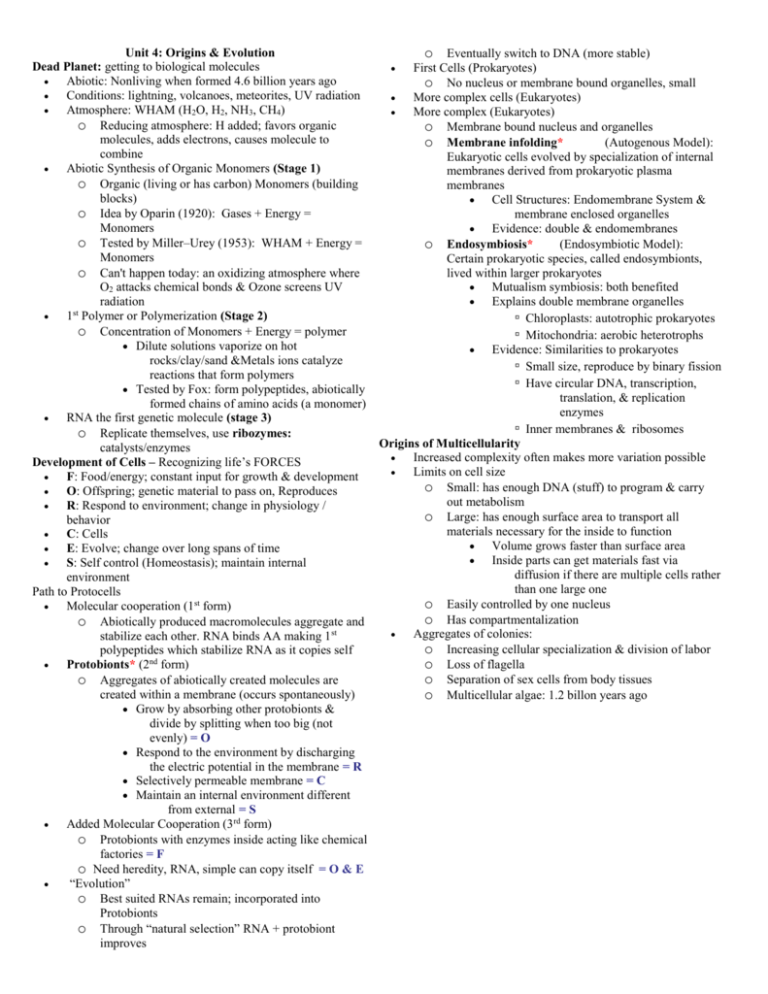
Unit 4: Origins & Evolution o Eventually switch to DNA (more stable) Dead Planet: getting to biological molecules First Cells (Prokaryotes) Abiotic: Nonliving when formed 4.6 billion years ago o No nucleus or membrane bound organelles, small Conditions: lightning, volcanoes, meteorites, UV radiation More complex cells (Eukaryotes) Atmosphere: WHAM (H2O, H2, NH3, CH4) More complex (Eukaryotes) o Reducing atmosphere: H added; favors organic o Membrane bound nucleus and organelles molecules, adds electrons, causes molecule to o Membrane infolding* (Autogenous Model): combine Eukaryotic cells evolved by specialization of internal Abiotic Synthesis of Organic Monomers (Stage 1) membranes derived from prokaryotic plasma o Organic (living or has carbon) Monomers (building membranes blocks) Cell Structures: Endomembrane System & o Idea by Oparin (1920): Gases + Energy = membrane enclosed organelles Monomers Evidence: double & endomembranes o Tested by Miller–Urey (1953): WHAM + Energy = o Endosymbiosis* (Endosymbiotic Model): Monomers Certain prokaryotic species, called endosymbionts, o Can't happen today: an oxidizing atmosphere where lived within larger prokaryotes O2 attacks chemical bonds & Ozone screens UV Mutualism symbiosis: both benefited radiation Explains double membrane organelles 1st Polymer or Polymerization (Stage 2) ▫ Chloroplasts: autotrophic prokaryotes o Concentration of Monomers + Energy = polymer ▫ Mitochondria: aerobic heterotrophs Dilute solutions vaporize on hot Evidence: Similarities to prokaryotes rocks/clay/sand &Metals ions catalyze ▫ Small size, reproduce by binary fission reactions that form polymers ▫ Have circular DNA, transcription, Tested by Fox: form polypeptides, abiotically translation, & replication formed chains of amino acids (a monomer) enzymes RNA the first genetic molecule (stage 3) ▫ Inner membranes & ribosomes o Replicate themselves, use ribozymes: Origins of Multicellularity catalysts/enzymes Increased complexity often makes more variation possible Development of Cells – Recognizing life’s FORCES Limits on cell size F: Food/energy; constant input for growth & development o Small: has enough DNA (stuff) to program & carry O: Offspring; genetic material to pass on, Reproduces out metabolism R: Respond to environment; change in physiology / o Large: has enough surface area to transport all behavior materials necessary for the inside to function C: Cells Volume grows faster than surface area E: Evolve; change over long spans of time Inside parts can get materials fast via S: Self control (Homeostasis); maintain internal diffusion if there are multiple cells rather environment than one large one Path to Protocells o Easily controlled by one nucleus Molecular cooperation (1st form) o Has compartmentalization o Abiotically produced macromolecules aggregate and Aggregates of colonies: stabilize each other. RNA binds AA making 1st o Increasing cellular specialization & division of labor polypeptides which stabilize RNA as it copies self o Loss of flagella Protobionts* (2nd form) o Separation of sex cells from body tissues o Aggregates of abiotically created molecules are created within a membrane (occurs spontaneously) o Multicellular algae: 1.2 billon years ago Grow by absorbing other protobionts & divide by splitting when too big (not evenly) = O Respond to the environment by discharging the electric potential in the membrane = R Selectively permeable membrane = C Maintain an internal environment different from external = S Added Molecular Cooperation (3rd form) o Protobionts with enzymes inside acting like chemical factories = F o Need heredity, RNA, simple can copy itself = O & E “Evolution” o Best suited RNAs remain; incorporated into Protobionts o Through “natural selection” RNA + protobiont improves
